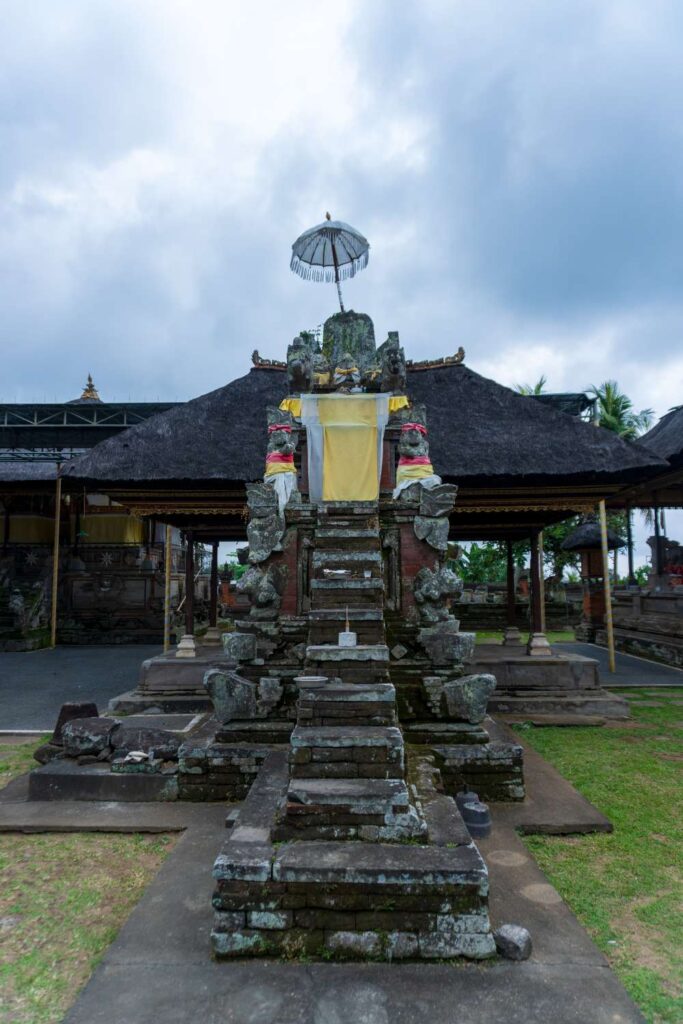
Found along the roadside in the village of Pejeng is said to be one of the oldest temples in Bali. It is home to a relic from the Bronze Age, a bronze drum, believed to have illuminated the village of Pejeng in ancient times.
This is Pura Penataran Sasih, which was founded in 1266 AD and served as the state temple of the Pejeng Kingdom from 1293 to 1343 AD. The temple complex comprises five areas: the main temple, Pura Taman Sari, Pura Ratu Pasek, Pura Bale Agung to the north and Pura Ibu to the south.
Within the main temple, various shrines can be found, including the Padma Kurung building at the entrance of the central courtyard, which houses Sang Hyang Jaran. The temple is celebrated for its collection of ancient statues depicting Ganesha, Balinese Hindu gods and goddesses, Dwarapala (the doorkeeper) and Lingga-Yoni, a symbol of masculine and feminine energy that represents the essence of fertility in life.



Pura Penataran Sasih also boasts a vast collection of stone inscriptions in Kawi and Sanskrit. The inscriptions are believed to be date back to the 9th or 10th century, though they are illegible due to age and weathering. However, this ancient temple is recognised as a cultural heritage site largely due to the presence of the ‘Bulan Pejeng’ or Pejeng Moon. The name “Penataran Sasih” derives from this relic, with “Penataran” meaning offerings and “Sasih” meaning moon.
The Pejeng Moon is a large cylindrical object, measuring 186.5 cm, with a design featuring an eight-pointed star at its centre, surrounded by circular patterns. This bronze drum also makes the temple a sacred place of worship for Sang Ratih, the Goddess of the Moon.

According to legend, Pejeng was once illuminated by two moons—one in the sky and one in the village. One night, a thief attempted to commit a crime but was thwarted by the constant light. In frustration, he urinated on the moon, extinguishing its light, a tale known as kencing maling meguna.
Another legend linked it to Kebo Iwa, a renowned Mahapatih of the ancient Balinese kingdom, who is said to have worn it as his subeng (earring). Now, revered by the villagers for its magical powers, the Pejeng Moon was used as a sacred medium to request rain to ensure a bountiful harvest.









